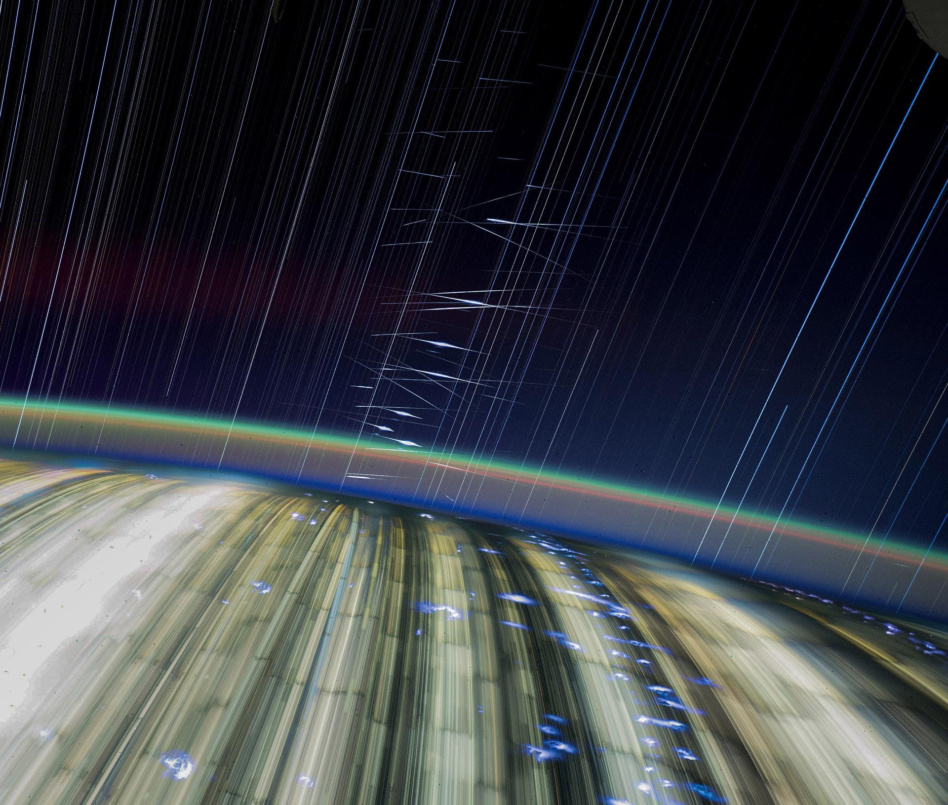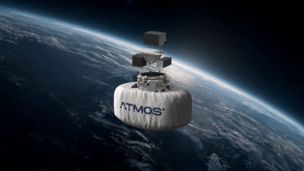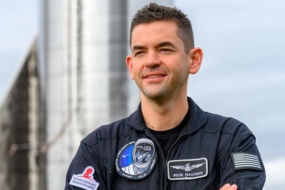Advocates for dark and quiet skies are outgunned.
Many would call the rise of constellations in LEO an economic and tech boon for everything from connectivity to EO. Astronomers, however, call them a nuisance getting in the way of their clear shot of the night sky.
Without any robust regulations to protect astronomical observations from interference in orbit, astronomers have been forced to bring their concerns directly to satellite operators in the hope of finding common ground.
It’s a David and Goliath story—if David had hung up the slingshot and used his words instead. Unsurprisingly, results have varied.
Down in front: Unfortunately, the exponential growth in the number of satellites on orbit, which by one estimate is projected to reach 43,000 by 2032, means that nowhere on Earth is dark enough for a fully clear picture of the night sky.
Satellites reflect sunlight off their solar panels and metallic bodies. On top of that, many are equipped with lights. That’s good news for space traffic management, reducing the likelihood of collisions, but it’s hindered many astronomers’ ability to see the space beyond.
For radio astronomers, who look for signals from celestial objects and phenomena by listening in to radio waves, the growing pool of operational satellites have created a cacophony—both over the radio waves that satcom birds use to communicate, as well as through the soft humming of the many electrical components now whirring around in orbit.
“It’s really a game of catch up because satellite operators are just launching more and more satellites continuously. They’re the ones with the billions of dollars in their budgets, where I volunteer for this work,” Mike Peel, leader of the Sathub unit at the International Astronomers Union Centre for the Protection of the Dark and Quiet Sky from Satellite Constellations (IAU CPS), told Payload.
Reign it in: Astronomy associations are calling for national and international regulations to limit the light and radio pollution on orbit, but progress has been slow.
Ultimately, IAU CPS wants regulators to
- Extend legal environmental protections to space
- Impose limits on future spacecraft’s light pollution
- Introduce standards to limit the electromagnetic leakage from satellites
- Police existing International Telecommunication Union (ITU) regulations to protect radio astronomy.
On the international level, IAU CPS has gotten through to the UN Committee on the Peaceful Uses of Outer Space (COPUS), which began discussing dark and quiet skies as a specific policy item in 2024. For the next five years, this committee will continue exploring possible regulations, but as Giuliana Rotola, head of the Policyhub at IAU CPS, pointed out: the results of this forum often lack teeth.
“In COPUS, it has been very hard to approve [and] adopt hard law instruments or binding legal tools. So, one of the latest documents that was approved was the long-term sustainability guidelines, which, however, is still a set of guidelines that are not binding,” Rotola told Payload.
Making matters worse, some member states, like China and Iran, have been reluctant to even join the conversation, according to Rotola.
In the US, Sen. John Hickenlooper (D-CO) introduced the Dark and Quiet Skies Act in August, which would create a center to develop and promote voluntary best practices to reduce optical and radio interference—the key word there is “voluntary.” Hickenlooper told Payload that he’s hopeful that the act will pass this year.
Common ground: With the expectation that international regulation will take a while, advocates have taken a different approach in the short term: making their case directly to industry. But with the growing number of sats boosting companies’ bottom line, dark skies supporters are getting more mixed results.
“SpaceX, to give them credit, have put a lot of engineering attention into this developing new films and new techniques,” Ruskin Hartley, executive director of the International Dark-Sky Association, told Payload. “They have the ability to mitigate the brightness, but at the same time, their business imperative has led them to create bigger and bigger satellites.”
SpaceX made multiple technical improvements after conversations with astronomers to reduce the glare of its constellation, including painting sats with an anti-reflective dark coating, adding sun visors, and adjusting their orbital inclination to avoid reflecting the sun’s light. These changes haven’t always been permanent, and they don’t go far enough, according to Peel. But at least they’re trying.
Some companies have launched sats without any mitigation measures. AST SpaceMobile’s BlueWalker 3 sat, launched in 2022, arrived on orbit as one of the brightest lights in the night sky.
“Basically there were 10 stars still in the sky brighter than [BlueWalker 3],” Peel said. “They’ve since launched five BlueBirds, which is their first of about 100 or 200 they want to launch. And those seem to be similar brightness.”
No matter how hard they try, astronomers can’t seem to get through to everyone, so they’ve resorted to working around the interference—literally.
The IAU’s Sathub researchers have built tools to catalog the interference and help astronomers plan their observations to avoid getting photo-bombed.
- SatChecker uses publicly available telemetry data to help astronomers plan their observations to evade incoming sats.
- The group also launched the Satellite Constellation Observation Repository (SCORE), which centralizes brightness data on sats to help catalog and inform the interference they’re seeing over time.
When to panic: In the early days of satellite constellations, the argument between operators and astronomers was all-or-nothing. In recent years, however, the two communities have been more willing to come to the table.
Satellite operators still guard the designs of their sats closely, making it harder for astronomers to anticipate pollution measures ahead of time, but the dialogue is improving, according to Rotola. Ultimately, dark sky advocates are attempting to get ahead of the problem before it reaches its crisis point, by driving up awareness and pushing satellite operators to self-regulate.
“We’re coping. It’s fine at the moment, and there’s really bright satellites up there we need to dodge…but it’s not preventing anything right now. What we’re worried about is, if there are a million satellites launched, what effect will that have?” asked Peel.




